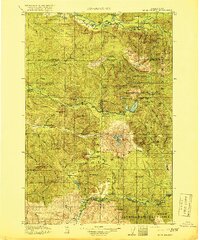Five Org Design Things N° 10
Pattern languages and org analysis; RTO is bad, even if offices are good; old maps made 3D; diverging values worldwide; exit interviews

Another digitized Pattern Language
A Pattern Language continues to be one of my all-time favorite books and IMO is a must-read for anyone working in organization design. It’s about building good cities and towns and buildings and rooms and lives and it’s packed full of patterns ranging from massive (Agricultural Valleys) to tiny (Different Chairs). This ↓ is a really nicely digitized version of it.

It’s missing some of the richer parts of the printed original – little descriptions of why the patterns work, but it does have nice graphs of the interconnections between the patterns. Shoutout to my favorite pattern, Six-Foot Balconies.
Side note: mapping pattern relationships is a good diagnostic practice. Here’s an old example of what that looks like in practice ↓
RTO makes senior employees quit
Speaking of identifying causal (or at least interesting) relationships in OD work, here’s a pretty impressive examination of the impact of Return to Office (RTO) mandates and retention of senior-level employees. The unsurprising conclusion, in the lede of coverage from Ars Technica:
Return to office (RTO) mandates can lead to a higher rate of employees, especially senior-level ones, leaving the company, often to work at competitors.
My stance here:
- These kinds of mandates are obviously bad management practice that we will look back on with extreme prejudice. Accidentally losing senior talent to competitors is both expensive and bad for business.
- Working in physical proximity to your colleagues is good. Human connection is important for mental and emotional health. Developing a shared language is doable online, but harder.
- Remote work isn’t new. Executives in large corporates have been working primarily remotely for a LONG time, and it’s been…fine. How else could you manage a multinational company?
- This is the latest in a long line of managers doing things that actively reduce performance but increase the feeling of control.
- The biggest problem here is that RTO is one of the most boring mandates you can make, and boring strategic calls are extremely disengaging for senior talent. Mandates should be exciting, game-changing, challenging things. Like this.
Anyway, this is a dumb thing that companies should stop doing. And the methods in this report are fascinating.
This is amazing
This is zero percent an org design thing, but maybe you’re looking for a diversion? Digitized old maps projected into 3D. So cool. You could lose hours in here!

Values are diverging worldwide

I hadn’t heard of “sacred vs. secular” and “emancipative vs. obedient” values before – that is, values that uphold or reject tradition, and values that expand or restrict individual freedom from the group, and it’s fascinating that the world is especially divergent on especially emancipative values. And there’s an interesting set of convergent values here:
- More tech
- More feelings of responsibility for kids
- Greater respect for authority
- Less importance placed on work
We’re also finding in some research we’re doing with marketing teams that the teams that report having “best-in-class CX” are those that also report being able to “feel the vision/values of the company in the products/services.” Here’s to more opinionated firms, I guess?
Extremely spicy, public exit interviews

There’s a lot of really interesting, good stuff in here but at least for me this misses the mark:
Now, we all know that there’s a very small relationship between brand awareness and performance. There are lots of brands in the world with 95% brand awareness who can’t make their sales numbers. Coca-Cola has very high brand awareness. Is Coke happy with the amount of Coke Red it’s selling right now across the world? No, they’re fucking not.
Having grown small businesses from zero to something, and having been inside large organizations with sophisticated economic models that predict future revenue growth, I can tell you that a) awareness isn’t the thing executives are necessarily concerned about, but the broader basket of brand measures are definitely important, b) awareness absolutely matters, and c) any reason why an exec enjoying high awareness might bemoan lower sales is going to be much more complex than “oh, there’s no relationship there.”
Also, $KO is close to all-time highs as of this writing.





Comments